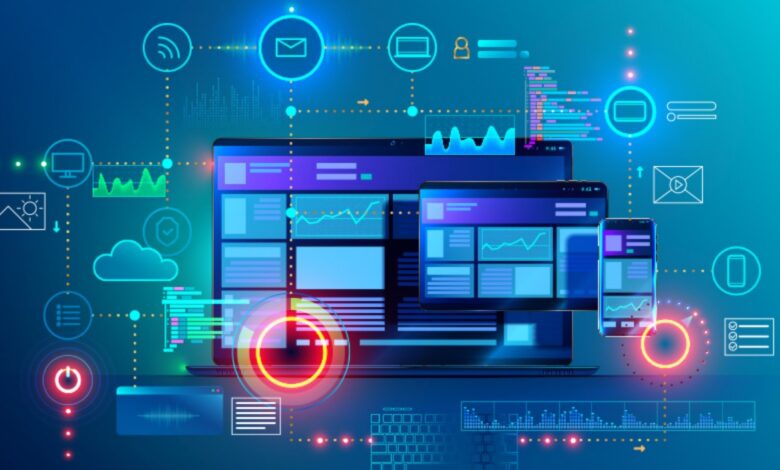The Art of Future-Proofing: How Application Modernization Is Shaping the Tech World

Application modernization refers to the process of updating or modernizing existing software applications to align them with current business needs, technological advancements, and market demands. As technology evolves rapidly, organizations are faced with the challenge of ensuring that their applications remain relevant, efficient, and secure. By undergoing application reformation, businesses can enhance performance, streamline processes, and drive innovation.
Future-proofing technology is essential for organizations looking to stay competitive and agile in an ever-changing digital landscape. By adopting a proactive approach to technology upgrades and improvements, companies can avoid costly disruptions, maintain pace with industry trends, and capitalize on emerging opportunities. Future-proofing technology through application reformation is crucial for ensuring long-term success and sustainability in the tech world.
The Benefits of Application Modernization
Increased flexibility and scalability
One of the primary benefits of application reformation is the increased flexibility and scalability it offers to organizations. Modernized applications are designed to adapt to changing business requirements, market conditions, and user demands. By replacing legacy systems with agile, modular architectures, businesses can respond more effectively to evolving needs, scale operations seamlessly, and stay ahead of the curve.
Improved security and compliance
Application modernization helps enhance security and compliance by incorporating the latest security protocols, encryption standards, and threat detection mechanisms. Modernized applications are better equipped to withstand cyber threats, safeguard sensitive data, and comply with industry regulations. By prioritizing security in the modernization process, organizations can build trust with customers, partners, and stakeholders.
Enhanced user experience
Modernizing applications can significantly improve the user experience by optimizing performance, responsiveness, and usability. By leveraging modern interfaces, intuitive workflows, and personalized features, businesses can enhance user engagement, satisfaction, and retention. A user-centric approach to application reformation ensures that applications meet the needs and expectations of a diverse user base, driving adoption and loyalty.
Reduced maintenance and operating costs
Legacy systems are often expensive and resource-intensive to maintain, upgrade, and support. Application modernization can help reduce maintenance and operating costs by streamlining processes, eliminating redundant functions, and leveraging automation tools. By modernizing applications, organizations can lower IT expenses, improve operational efficiency, and reallocate resources to more strategic initiatives.
Embracing New Technologies
Exploring current trends and applications
In today’s fast-paced tech landscape, staying abreast of current trends and applications is crucial for organizations seeking to innovate and grow. From cloud computing and edge computing to DevOps and microservices, there are numerous technologies reshaping the way applications are developed and deployed. By exploring these trends and applications, businesses can identify opportunities to modernize their applications and gain a competitive edge in the market.
Highlighting innovative solutions and tools
Innovation drives progress in the tech world, with a constant influx of new solutions and tools revolutionizing how applications are built and managed. From low-code platforms and containerization to serverless computing and AI-driven analytics, there is a wealth of innovative solutions available to organizations looking to modernize their applications. By incorporating these cutting-edge tools into their modernization strategies, businesses can unlock new capabilities, improve efficiencies, and accelerate time-to-market.
The role of emerging technologies in modernization
Emerging technologies such as artificial intelligence, machine learning, and blockchain are playing a pivotal role in driving application modernization. By harnessing the power of these technologies, organizations can automate processes, enhance decision-making, and deliver personalized experiences to users. The integration of emerging technologies into modernization initiatives enables businesses to stay at the forefront of industry innovation and create sustainable competitive advantages.
Overcoming Challenges and Obstacles
Common hurdles during application modernization
Despite the benefits of application reformation, organizations often encounter challenges and obstacles that can impede progress and hinder success. Common hurdles during modernization initiatives include legacy system dependencies, data migration complexities, integration issues, and resistance to change. These challenges require careful planning, effective communication, and strategic decision-making to overcome and ensure a smooth modernization process.
Effective strategies for managing change and mitigating risk
To navigate the complexities of application reformation and mitigate potential risks, organizations must employ effective strategies for managing change and fostering buy-in across stakeholders. Communication and collaboration are key to successful modernization initiatives, as they help align goals, set expectations, and address concerns proactively. By implementing change management frameworks, risk mitigation strategies, and contingency plans, businesses can navigate uncertainty, build resilience, and drive successful outcomes.
Addressing technical and cultural barriers to adoption
In addition to technical challenges, organizations must address cultural barriers to adoption when modernizing applications. Resistance to change, lack of expertise, and organizational silos can inhibit progress and undermine the effectiveness of modernization efforts. To foster a culture of innovation and collaboration, companies must invest in training, promote knowledge sharing, and empower employees to embrace new technologies and practices. By addressing both technical and cultural barriers to adoption, organizations can create an environment conducive to successful application reformation.
Conclusion
Application modernization is not just a technical endeavour but a strategic imperative for organizations looking to innovate, adapt, and thrive in the tech world. The benefits of application reformation are far-reaching, encompassing increased agility, improved efficiency, and enhanced competitiveness for businesses of all sizes and industries. By emphasizing the importance of modernization and its impact on organizational performance, companies can unlock new opportunities, drive growth, and secure their position in the digital economy.
In light of the transformative potential of application reformation, the time for businesses to act is now. A proactive approach to modernization is critical for organizations seeking to future-proof their operations, stay ahead of the competition, and deliver value to their customers. By embracing modernization strategies, investing in new technologies, and fostering a culture of innovation, businesses can position themselves for success in a dynamic, ever-evolving tech landscape.



